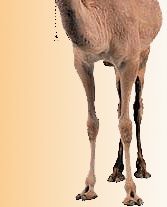Rajasthani Cuisines
Cuisines of Rajasthan have been greatly influenced by the climate of the state as well as the war conditions, which were quite frequent. Because of inadequate water, lack of green vegetables and other problems associated with the climate, Rajasthani cuisine developed a style of its own, to suit the conditions. Long lasting food, not requiring any heating, evolved because of the frequent wars fought by the state.
However, in spite of all the limitations, traditional food of Rajasthan, India is as delicious as any other cuisine. Just like the arts and crafts of the state, the food was also considered as another form of art. Complex and exquisite methodology was used in the preparation of food for the royalty. The royal cooks, who handled the food of the royals, passed on the recipes to the coming generations. Numerous additions were made to the original recipes. This led to the evolution of the Rajasthani cuisine of the present day world.
In Jaisalmer, Barmer and Bikaner, the desert belt, milk, buttermilk and butter is used in place of the scarce water. Also in the Maheshawari cooking, mango powder is extensively used to substitute the scarce tomatoes. Mostly, pure ghee is used in the Rajasthani preparations.
The most famous cuisines of Rajasthan are:
• Lapsi (sweet dish prepared with broken wheat (dalia), sautéed in ghee and sweetened).
• Combination of dal (lentils), bati (baked wheat ball) and churma (sweetened cereal)S
• Mawa Kachori (Jodhpur specialty)
• Ghevar (Jaipur specialty)
• Mawa (Alwar specialty)
• Rasogullas (Bikaner specialty)
• Malpuas (Pushkar specialty)
|
|




